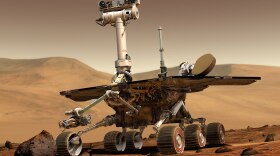This week marks the statistically hottest time of the year—a fitting moment to reflect on the nature of heat. At its core, heat is just atomic motion: room temperature atoms zip around at 1,000 mph, and even freezer-chilled ones aren't far behind. Combustion happens when atoms move fast enough to sustain a reaction, with ignition temperatures varying by substance—wood around 400°F, gasoline at 495°F, and paper at the symbolic 451°F. Pyrophoric materials like sodium don’t even need a spark to ignite. Ultimately, heat is motion—your feverish 102°F body is just your molecules moving faster than usual. Tune in this week to hear more about atomic speed.

Play Live Radio
Next Up:
0:00
0:00
Available On Air Stations






